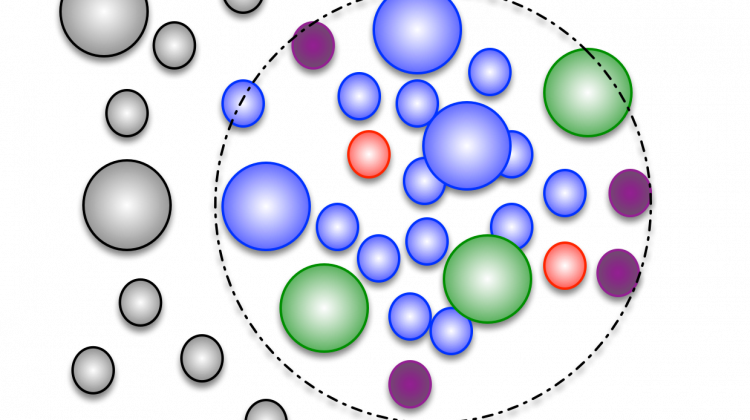
Understanding Innovating Networks
Innovating networks are the most complex and dynamic networks we encounter. These networks unite diverse partners to solve wicked problems through collaboration, open innovation, and ecosystems. Participants in innovating networks recognize that many challenges today are interconnected and multidimensional.
Here’s the paradox: in complex, dynamic environments, generating better solutions for each participant requires multiple participants’ collective expertise and resources.
INNOVATING NETWORKS: WHY THEY MATTER
Innovating networks foster a culture of collaboration where partners come together to share knowledge, insights, and resources to create shared value. They innovate together. As these networks form, an ecosystem emerges. You can think of this process as “open innovation” (Chesbrough, 2017).
Effective innovating networks have a clearly defined structure. They form around a core team. Scholars sometimes refer to the role of a core team as an “orchestrator” (Bittencourt et al., 2018). The core team guides a process of continuous innovation and a continuous search for better solutions. In addition, innovating networks have porous boundaries. They are committed to open innovation (Chesbrough, 2017; Curley & Salmelin, 2018).
Sometimes, the partners in an ecosystem come from different sectors, such as government, academia, industry, and non-profit organizations. When that happens, we often refer to these ecosystems as clusters, a term Michael Porter popularized in the 1990s. (Porter & others, 1998).
DIG DEEPER: UNDERSTANDING WHAT COLLABORATION IS (AND ISN’T)
Let’s pause a moment on the word collaboration.
As I have written, collaboration is probably the most overused and misunderstood term in today’s business lexicon. Collaboration is not cooperation, coordination, or teamwork. A collaboration is more complex. At its core, collaboration is a process of recombinant innovation among equal partners.
Collaboration creates new value that no individual participant can create alone. New value—new solutions to complex problems—emerge from the participants’ interactions. This process itself is not linear. It does not fit together neatly, like project management. It is more dynamic. It is a complex adaptive system of interacting participants.
Collaborations arise from a continuous, iterative process that my colleague Doug Smith calls Design/Do. The participants create new, shared value through continuous experimentation. They recombine assets already at hand—assets embedded in their network. Collaboration follows an abductive or entrepreneurial logic—what entrepreneurial scholar Sarasvathy called “effectuation” (Sarasvathy, 2009)
Although the process can be guided, it cannot be directly managed. Traditional management disciplines don’t work with collaboration. New adaptive management disciplines are required. These management disciplines are grounded in inquiry, design, and reflective practice (Schön, 2017).
ECOSYSTEMS: INNOVATING NETWORKS EMBEDDED IN OTHER NETWORKS
Ecosystems emerge as participants form collaborations. These innovating networks form ecosystems where different organizations and individuals use their experiences to learn and adapt. Participants in an ecosystem acknowledge that solving wicked problems requires a collective effort. Individual entities or siloed approaches cannot address these complex challenges.
Through collaboration, open innovation, and the formation of ecosystems, innovating networks have the potential to tackle complex, interconnected problems that individual efforts or siloed approaches cannot solve. These networks allow diverse perspectives, ideas, and expertise to converge, leading to more comprehensive and innovative solutions.
Moreover, innovating networks foster a sense of collective ownership and responsibility among their participants. They recognize that working together can achieve greater impact and create sustainable change.
Our Challenge: How do we increase the volume and velocity of innovating networks?
That’s why we designed Strategic Doing. You can think of Strategic Doing as an operating system for innovating networks.
References
Bittencourt, B. A., Zen, A. C., Schmidt, V., & Wegner, D. (2018). The orchestration process for emergence of clusters of innovation. Journal Of Science And Technology Policy Management, 11(3), 277–290. https://doi.org/10.1108/jstpm-02-2018-0016
Chesbrough, H. (2017). The Future of Open Innovation. Research-Technology Management, 60(1), 35–38. https://doi.org/10.1080/08956308.2017.1255054
Curley, M., & Salmelin, B. (2018). Open Innovation 2.0. Innovation, Technology, And Knowledge Management. https://doi.org/10.1007/978-3-319-62878-3
Porter, M. E., & others. (1998). Clusters and the new economics of competition (Vol. 76, Number 6). Harvard Business Review Boston.
Sarasvathy, S. D. (2009). Effectuation: Elements of entrepreneurial expertise. Edward Elgar Publishing.
Schön, D. A. (2017). The Reflective Practitioner. https://doi.org/10.4324/9781315237473



